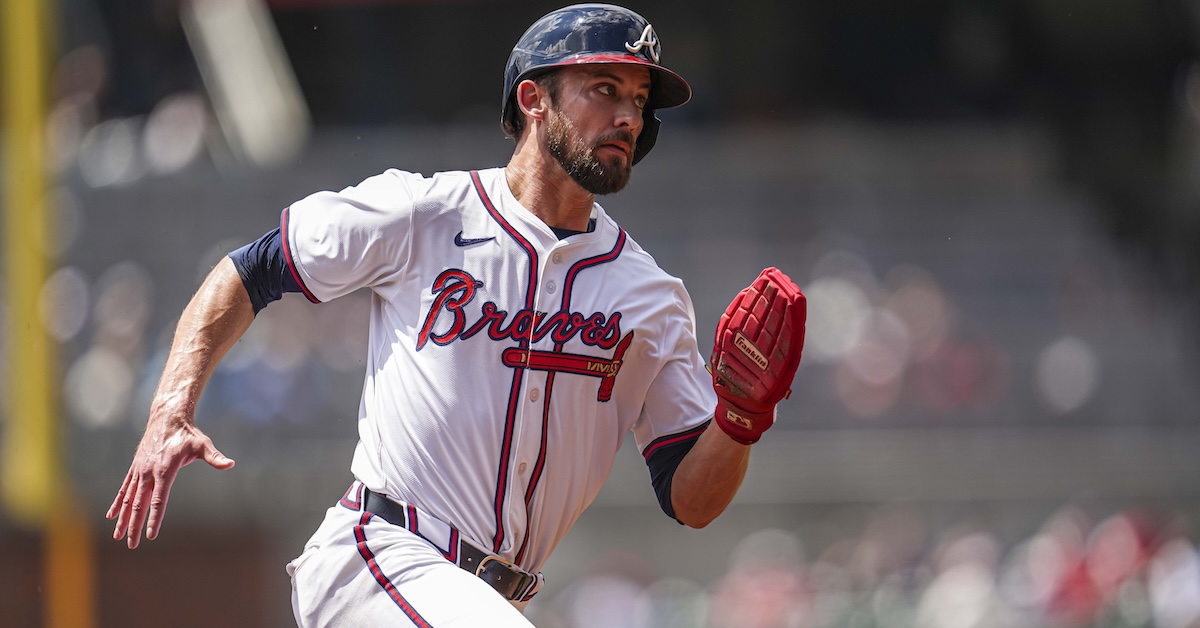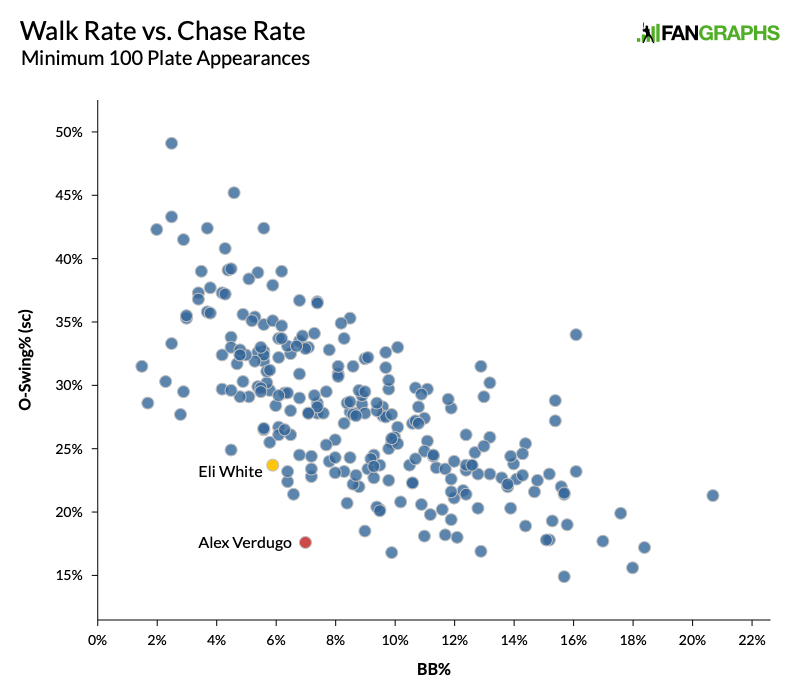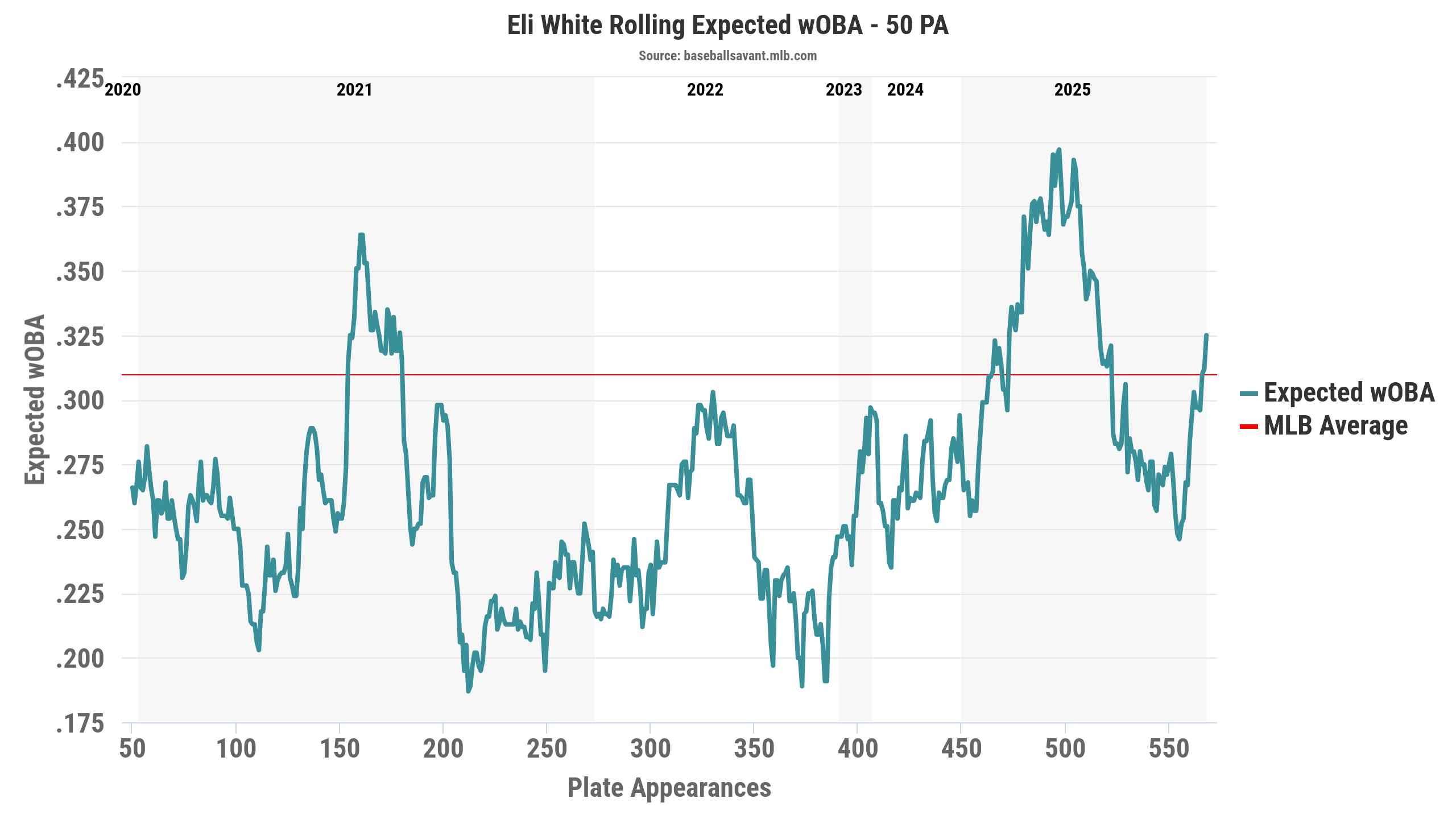As the Braves Recover From Their Sluggish Start, the Return of Ronald Acuña Jr. Looms

The Braves have limped through the first seven weeks of the season at far less than full strength, particularly within their outfield, where they lost Jurickson Profar to an 80-game PED suspension and have taken a very slow and deliberate approach to Ronald Acuña Jr.’s rehabilitation from his second anterior cruciate ligament repair surgery in three years. That outfield has ranked among the majors’ least productive, offset only by the emergence of Eli White. But at least help is on the horizon. Acuña’s rehab stint is finally underway, and he could return to the Atlanta lineup as soon as this weekend.
Acuña tore his left ACL on May 26, 2024 and underwent surgery to repair it on June 4. When he returned from his 2021 tear of his right ACL nine months and one week after surgery, he did not play up to his usual standard in ’22. The Braves resolved to take his rehab more slowly this time around, resisting the urge to accelerate his timeline even with Acuña reportedly hitting 450-foot bombs in batting practice early in spring training, and even with the team stumbling out of the gate by losing its first seven games and 13 of its first 18. The 27-year-old slugger finally returned to action last Tuesday with the Braves’ Florida Complex League affiliate, homering off Kevin Velasco, a 19-year-old righty on the Orioles’ FCL squad:
.@ronaldacunajr24 goes yard in his first rehab start! pic.twitter.com/e5ZFhb9jSF
— Atlanta Braves (@Braves) May 13, 2025
Acuña then moved up to Triple-A Gwinnett, where he went 3-for-6 with a homer and six walks in three games against the Charlotte Knights, affiliate of the White Sox, from Thursday through Saturday. The homer, a 102-mph, 420-footer to dead center, was hit off 25-year-old lefty Tyler Schweitzer.
The Braves haven’t announced Acuña’s schedule for the upcoming week, but if they want to keep him close to home, he could play for their Double-A Columbus affiliate starting on Tuesday. According to MLB.com’s Mark Bowman, “The assumption is he’ll be activated by the time Atlanta begins its next homestand on Friday against the Padres.”
It won’t be a moment too soon for the Braves, who have won 10 of their last 15 to claw their way back to a 24-23 record. Sunday’s 10-4 victory Friday’s 4-2 victory over the Red Sox put them above .500 for the first time this season. They’re running third in the NL East, five games out of first, and sixth in the NL Wild Card race, four games behind the Giants. Their offense has scored just 4.15 runs per game, 13th in the NL, though its 98 wRC+ (.247/.319/.390) is tied for eighth; between that wRC+ and the team’s BaseRuns average of 4.42 runs per game, it appears sequencing has been a significant part of the problem.
Even so, there’s no getting around the dreadful production of the Atlanta outfield, which has produced a 70 wRC+ (.231/.279/.339), tied with the Rockies for the majors’ second-worst mark; the unit’s -0.3 WAR is 25th. Michael Harris II, who has started all but one of the team’s 46 games in center field, has drastically underperformed for no clear reason, hitting .222/.258/.339 (60 wRC+). In right field, what was supposed to be a platoon of Jarred Kelenic and Bryan De La Cruz to cover Acuña’s absence didn’t last long, as the latter was pulled into regular duty in left field following the April 1 suspension of Profar. In his latest stumble at the major league level, Kelenic hit .167/.231/.300 (46 wRC+) with a 35.4% strikeout rate in 65 plate appearances while making 20 starts in right field; he was optioned to Gwinnett on April 28. De La Cruz hit just .191/.240/.213 (27 wRC+) in 50 PA before being optioned to Gwinnett on April 17 and then claimed by the Yankees on May 1. Alex Verdugo, who went unsigned until March 20 after a dismal season with the Yankees, swung a hot bat upon joining the Braves on April 20, collecting two four-hit games within a nine-day span, but now his 86 wRC+ (.264/.322/.340) is roughly in line with his 83 last year with New York. Stuart Fairchild, whom the Braves acquired from the Reds for cash on March 31, has hit .103/.161/.207 (-2 wRC+) in 31 PA, and 2021 postseason hero Eddie Rosario’s return to the fold lasted just one game before he was designated for assignment; he’s since signed a minor league deal with the Brewers.
The only Braves outfielder who has acquitted himself well in all of this — indeed, their only one with a wRC+ better than Verdugo — is White, a 30-year-old righty who entered the year with a .191/.266/.302 (59 wRC+) career line in 448 plate appearances, and who had made just 69 PA in the majors over the past two seasons. He’s hit a respectable .284/.333/.450 for a 114 wRC+ in 118 PA.
Even this level of success — which amounts to about five weeks of regular play since De La Cruz fell out of favor — has been a long time coming for White. Drafted out of Clemson by the A’s in the 11th round in 2016, he was traded to the Rangers in a three-way December 2018 deal that sent Profar from Texas to Oakland. Plus speed, an above-average hit tool, and the ability to play several positions competently — including shortstop and center field — made him an interesting prospect despite a lack of power, but injuries have dogged him for years. He spent parts of 2020–22 with the Rangers, but tore his UCL in September 2021 and underwent an internal brace procedure (not full Tommy John surgery), and then on June 12, 2022, he fractured his right wrist in an outfield collision and returned to play just three minor league games in September. His January 2023 trade to the Braves didn’t change his luck; on July 6 of that season, while playing center field for Gwinnett, he dislocated his left shoulder and tore his labrum while trying to make a catch, requiring season-ending surgery.
White spent most of 2024 with Gwinnett, though he did get called up three times, and spent all of September in the majors. In 42 plate appearances, he hit .282/.333/.436, but his success was fueled by a .385 BABIP in a small sample that offset a 2.8% walk rate. This year’s slash line looks similar, but he’s on more solid ground based on his peripherals. Because he hasn’t shown much power or done much damage at the major league level before, pitchers haven’t hesitated to throw him strikes; his 57.5% zone rate ranks fourth among the 250 hitters with at least 100 PA thus far. But where he’d made contact on 78.8% of his swings on pitches in the zone prior to this season, he’s improved that to 88.3% this year while cutting his strikeout rate from 31.7% (cumulative pre-2025) to 22%. But even with just a 23.7% chase rate, he’s walked just 5.9% of the time, making him something of an outlier:

You can see Verdugo — whose 59.8% zone rate is the highest at the 100 PA cutoff — has a similar combination (18.1% chase rate, 6.4% walk rate). These guys aren’t exactly striking fear in the hearts of opposing pitchers, who just pound the zone against them.
White has added some bat speed relative to last year, improving from 71 mph to 72.1, which places him in the 51st percentile. His 12.4% blast rate is in the 56th percentile, though his 21.2% squared-up rate ranks in just the 15th. All of which is to say that he doesn’t make a ton of hard contact, and he hits the ball on the ground most of the time — he has a 53.8% groundball rate, and an average launch angle of 4.8 degrees — which at least helps him take advantage of his 99th-percentile speed (he has six infield hits and three triples, compared to two homers). His 88.1-mph average exit velo, 6% barrel rate, and 39.3% hard-hit rate are all around the 30th percentile, but even given all that, this has made for substantially more success than he’s experienced in the majors.

Given Verdugo’s struggles, it stands to reason that White could spend more time in left field once Acuña returns, and perhaps even spot for Harris in center.
Aside from the outfield, the Braves are getting truly subpar offense at both middle infield positions. Nick Allen has supplanted Orlando Arcia at shortstop but has hit just .260/.324/.293 (76 wRC+). Ozzie Albies is hitting just .225/.284/.332, with his 72 wRC+ representing a 23-point drop from last year and a 52-point drop from 2023, when he hit 33 home runs. Both Matt Olson (.240/.353/.444, 123 wRC+) and Austin Riley (.287/.335/.451, 117 wRC+) have produced at levels in line with last year, which represented substantial steps down from their big 2023 performances (54 homers and a 161 wRC+ for Olson, 37 homers and a 128 wRC+ for Riley). All of that has made it easier to pitch around Marcell Ozuna, whose walk rate has nearly doubled from last year’s 10.8% to 20.7%; he’s hit .267/.420/.467 (150 wRC+). Without Acuña, and with Harris struggling so mightily, all of those declines stand out more.
The return of Acuña should help, and likewise so should that of Spencer Strider. Limited to two starts last year before undergoing UCL internal brace surgery, the 26-year-old righty returned to the Braves on April 16, but he made just one start before straining his right hamstring while playing catch, an injury that’s cost him more than a month. After optioning fifth starter Bryce Elder on Friday, the Braves activated Strider on Monday and will start him against the Nationals on Tuesday. They’ll need better play from several of their hitters to capitalize on an NL East race that has tightened — the Mets’ 3 1/2-game lead at the start of May has dwindled to half a game ahead of the Phillies — but at least the Braves have dug themselves out of a hole and are starting to look whole again.
Brooklyn-based Jay Jaffe is a senior writer for FanGraphs, the author of The Cooperstown Casebook (Thomas Dunne Books, 2017) and the creator of the JAWS (Jaffe WAR Score) metric for Hall of Fame analysis. He founded the Futility Infielder website (2001), was a columnist for Baseball Prospectus (2005-2012) and a contributing writer for Sports Illustrated (2012-2018). He has been a recurring guest on MLB Network and a member of the BBWAA since 2011, and a Hall of Fame voter since 2021. Follow him on BlueSky @jayjaffe.bsky.social.
The Braves will also be helped by having Acuna batting first in the lineup. So far this season, Braves batting first have an obysmal .277 OBP and a.604 OPS.
This is a huge contributor to the sequencing issue mentioned in the article. With his walk rate, Harris should never have hit leadoff even if he weren’t slumping this badly. Verdugo somehow continues to lead off against lefties. Simply can not give the most at bats to guys who aren’t even above average hitters in their own lineup
Kinda surprised this isn’t being talked about more. How easily people forget that Acuna had an MVP season batting at the top of the lineup in ’23 when their offense was unstoppable. They scored 146 first-inning runs, the most by any club in any inning that year.